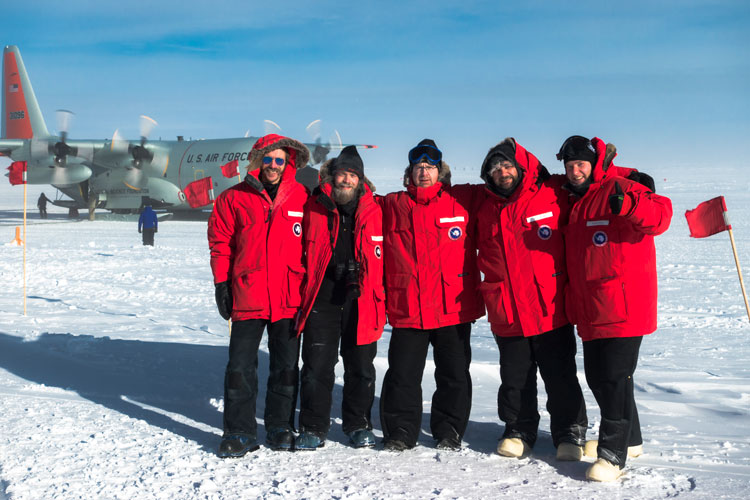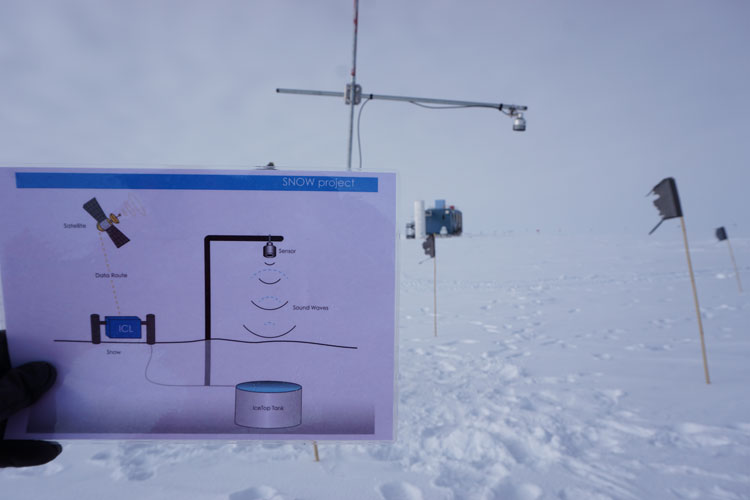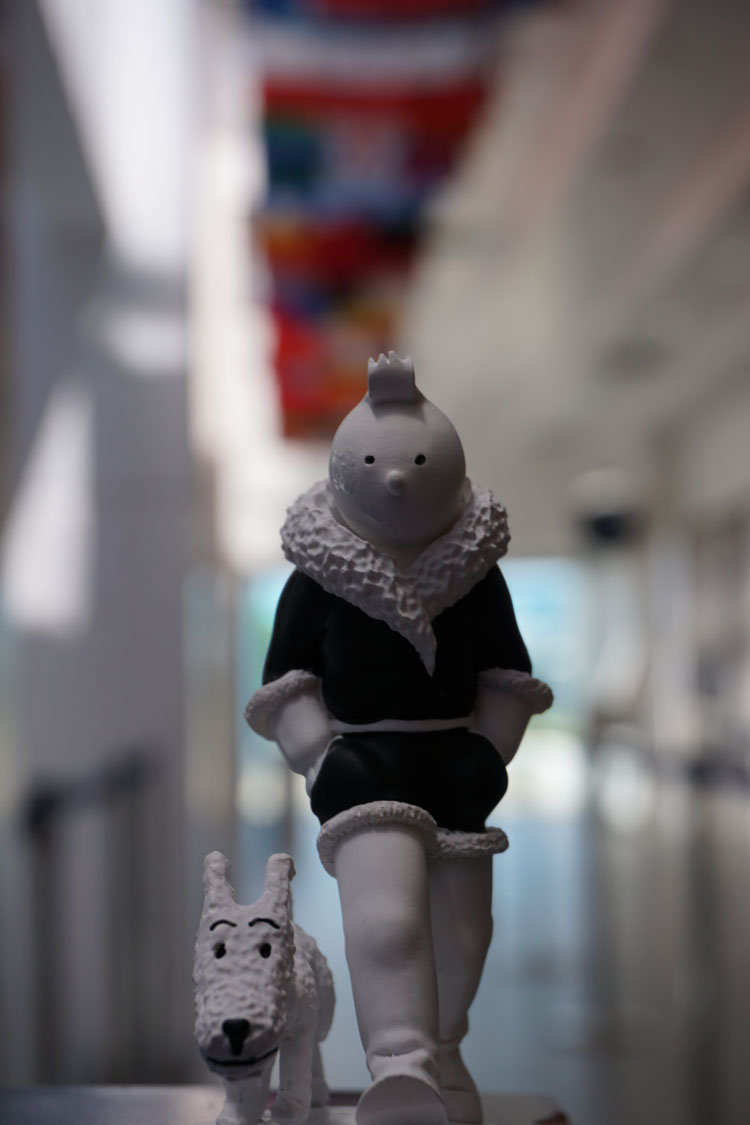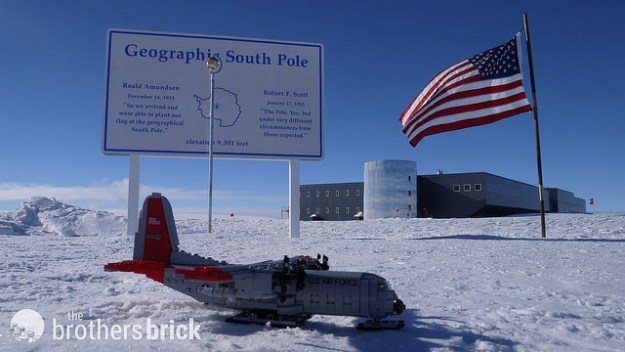The last flights of the austral summer left the South Pole station a couple of weeks ago. Now the station is closed for the season, and two IceCube winterovers will spend a long and dark winter in Antarctica, taking good care of the IceCube Neutrino Observatory.
Up until almost the last minute, the summer activities at the Pole kept the IceCube crew busy. This summer, a dozen IceCube researchers and staff, from eight institutions and six countries, spent some time at the Admundsen-Scott South Pole Station to perform maintenance and operations for IceCube and help prepare for a future deployment of the Askaryan Radio Array (ARA) detector. A PolarTREC teacher, Kate Miller, also traveled to the Pole to join the team, contributing to an extensive educational and outreach program that is still in progress.

This has been a tough season for flights, with plenty of cancellations due to bad weather, reaching up to nineteen consecutive call-offs in a row. But our team managed to complete most of the programmed tasks. And the list was extensive: maintenance activities for IceCube, the winterover transition, snow depth measurements for IceTop, maintenance of a prototype Air Cherenkov Telescope (IceACT), and helping out with other experiments such as ARA. Plus, there were several outreach activities, including a “visit” to the Pole from Tintin.
IceCube maintenance activities are always the core of the summer season. This year, the main efforts targeted the replacement of the power supplies that provide energy to the DOMs from the surface, through the so-called DOMHubs, located in the IceCube Laboratory (ICL). The update was done eight strings at a time, while the rest of the detector was still taking data. Another great improvement was the Iridium real-time communications system update, which has increased the bandwidth by 50%. “Although the new system was in place last year, we’ve now been able to officially retire our old system,” explains John Kelley, the IceCube maintenance and operations manager. “This bandwidth gain will boost our real-time followup program that sends alerts about interesting events in IceCube to other telescopes,” added Kelley.

Other maintenance items included replacement batteries in the ICL, upgrades to the system that alerts winterovers about any problems in the detector, along with regular security software updates. “We did everything as planned, even though our cargo suffered some water damage,” says Ralf Auer, a former IceCube winterover and the current winterover manager.
A typical IceCube summer season always includes some shoveling or taking measurements of the snow accumulated on top of the IceTop tanks. We know that the snow reduces the detectable electromagnetic component of cosmic-ray air showers and increases the energy threshold of the detector. This year, IceCubers have installed a prototype system to continuously monitor the snow depth at one station using an ultrasonic sensor connected to the ICL. “We installed this sensor on the border of the road between the station and the ICL to facilitate maintenance in case our winterovers need to work on it,” explains Gwen De Wasseige, a PhD student at Vrije Universiteit Brussel in Belgium. Physicists are now monitoring data to check if this automated measurement is reliable as the temperature drops.

The IceCube team also worked on the imaging Air Cherenkov Telescope (IceACT), which was installed on top of the ICL last year. This is a prototype for an array of small telescopes that could be used to detect cosmic rays together with IceCube directly at the South Pole. After a year of operation, the prototype underwent a detailed inspection and was recommissioned for another year of data taking. Also, related to the IceACT telescope, a higher-resolution wide-angle camera was installed in the ICL antenna housing to monitor cloud cover and auroras.
Finally, ARA activities focused on three major efforts: building up the infrastructure for the installation of three additional stations in the 2017–2018 season, calibration activities supporting the current detector stations, and tests of evolved antenna designs for potential future station improvements, which could significantly reduce the costs of a multi-kilometer radio array. IceCube deployers were able to assist ARA researchers in these activities during their spare time.

Outreach at the Pole
Beyond her tasks for IceTop, Gwen ran an extensive outreach program with her home institution to engage Belgian citizens in IceCube research. These included end-of-year greetings to scientists at the Pole and an experiment contest with more than 200 K-12 student participants.

Through a partnership with the Moulinsart Foundation, IceCube hosted a “visit” from Tintin to the South Pole. A figurine of Tintin was sent to the Pole with Gwen, who provided Tintin’s followers with images and stories about IceCube and life at the South Pole. Read more about it here.
Another interesting collaborative project this season was the arrival of a LEGO Hercules plane to the South Pole, brought by our collaborator Martin Rongen, a Ph.D. student at RWTH Aachen in Germany, who was at the Pole to work on the IceACT maintenance.
During the last few years, IceCube has partnered with the NSF-funded PolarTREC program to include a teacher on the IceCube team at the South Pole. These teachers, all committed to bringing research to the classroom and reaching out to broad audiences, are fantastic at connecting IceCube to students and teachers around the U.S. This year, Kate Miller, from Washington-Lee High School in Arlington, VA, held an art contest that received over 200 submissions from pre-K–12 students, mailed over 500 postcards to students, teachers, and the public, and blogged about her expedition in daily journals. “I hope to model what it looks like to be a life-long learner, reigniting an innate curiosity in all of us to better understand how our own universe works,” says Miller.

IceCube also supported Donald Fortescue, an NSF Antarctic Writers and Artists grant recipient, who explored expressing IceCube data with sound. He created a piano-based computer program that played cosmic compositions, with each IceCube string corresponding to one of the keys. He also designed his own science “instrument” to record the position of the sun and produce and record sounds based on wind speed and direction. It was a really cool set up sitting just outside the IceCube Lab.
Finally, as part of our outreach activities, IceCube hosted three webcasts for students and other interested audiences, with a total participation of around 750 people.
